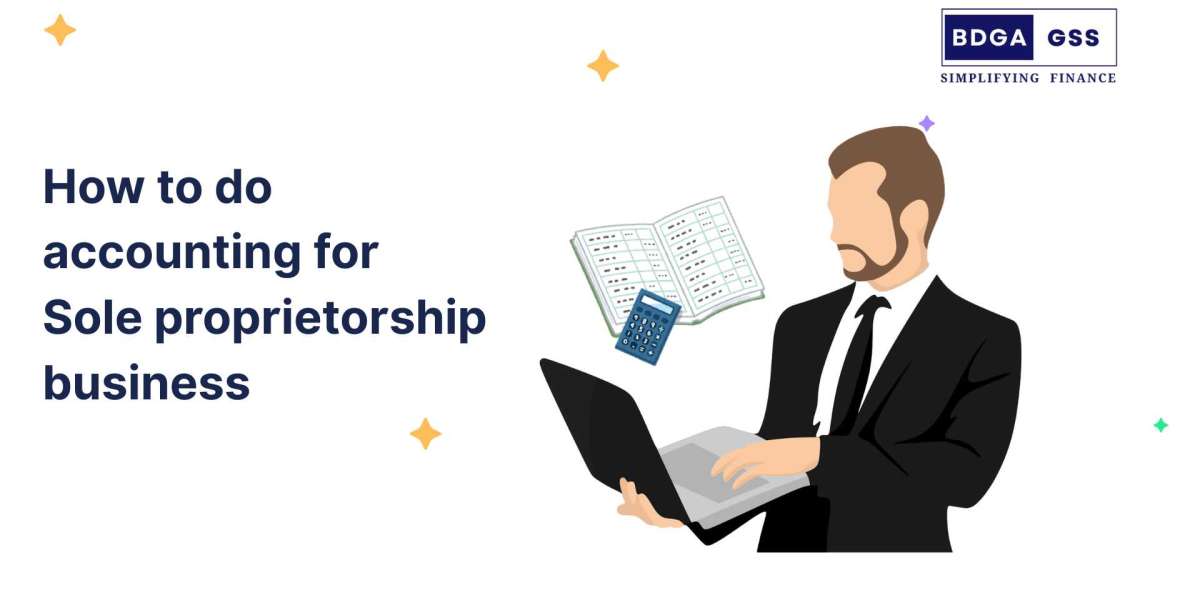Overview
Running your own business means wearing a lot of hats, and being an accountant is probably one you didn't sign up for. This guide breaks down sole proprietorship accounting in plain English, covering everything from day-one setup to tax season survival.
Introduction
Let's be real: most people start a sole proprietorship because they want to focus on their craft, not crunch numbers. Whether you're a freelance writer, consultant, photographer, or handyman, the last thing you want to worry about is complicated bookkeeping.
But here's the thing—ignoring your accounting doesn't make it go away. It just makes everything harder when tax season rolls around. The good news? Sole proprietorship accounting is actually pretty straightforward once you know the basics.
You don't need a business degree or expensive software to get this right. What you need is a simple system that works for your specific situation and the discipline to stick with it. Think of it as part of running your business, just like marketing or customer service.
Essential Accounting Steps for Sole Proprietors
Get Your Money Sorted From Day One:
First things first: open a business bank account. Yes, even if you're just testing the waters with your side hustle. Mixing personal and business money is like trying to unscramble eggs—technically possible, but why make life that hard?
Most banks offer free business checking for sole proprietorships, especially if you're not doing tons of transactions. Look for one with good online banking and maybe a decent mobile app for depositing checks on the go.
Track Every Dollar Coming In:
Your income tracking doesn't need to be fancy, but it needs to be complete. Whether someone pays you through Venmo, writes you a check, or hands you cash, write it down. Date, amount, who paid you, and what for.
If you're using invoicing software like FreshBooks or even just sending PayPal invoices, most of this gets tracked automatically. But don't rely on that completely—always double-check your records match your bank deposits.
Keep Those Receipts (But Be Smart About It):
The IRS lets you deduct business expenses, but only if you can prove them. That doesn't mean keeping every coffee receipt from 2019, though. Focus on the stuff that actually matters: office supplies, software subscriptions, business meals with clients, equipment, and professional services.
Pro tip: Take photos of receipts with your phone right away. Paper receipts fade, get lost, or turn into mysterious pocket lint. Most accounting apps let you snap and categorize receipts instantly.
Know What You Can Actually Deduct:
Home office? Deductible. That $200 course that made you better at your job? Deductible. Half your internet bill because you work from home? Maybe—but be reasonable about it.
Vehicle expenses are big if you drive for business. You can either track actual expenses (gas, maintenance, insurance) or use the standard mileage rate. The mileage rate is usually simpler—just keep a log of business trips.
Handle the Tax Stuff:
Here's where it gets slightly complicated. As a sole proprietor, your business income goes on your personal tax return using Schedule C. You'll pay regular income tax plus self-employment tax (basically Social Security and Medicare for self-employed folks).
Self-employment tax is about 15.3% on your net business income, and it catches a lot of people off guard. Plan for it by setting aside money throughout the year—maybe 25-30% of your income if you're not sure.
Pay Quarterly (Seriously):
The IRS wants its money four times a year, not just once. If you expect to owe more than $1,000 in taxes, you need to make quarterly payments. Mark your calendar: mid-January, mid-April, mid-June, and mid-September.
Use Form 1040ES to calculate what you owe. It's basically educated guessing based on what you think you'll make. Don't stress about being perfect—just get close.
Keep It Simple, Keep It Consistent.
The best accounting system is the one you'll actually use. Maybe that's a simple spreadsheet, maybe it's QuickBooks, maybe it's just a notebook and a shoebox. Whatever works for you is fine, as long as you stick with it.
Set aside time each week—even just 30 minutes—to update everything. Pay bills, record income, and categorize expenses. Think of it like brushing your teeth: not fun, but way better than dealing with the consequences of skipping it.
Conclusion
Sole proprietorship accounting doesn't have to be your nemesis. Start with the basics: separate accounts, track everything, save for taxes, and stay consistent. You're not trying to win any awards here—you just want to keep the IRS happy and your business running smoothly.
Remember, every successful business owner had to figure this stuff out at some point. You've got this.
Blogged by: BDGAGSS











